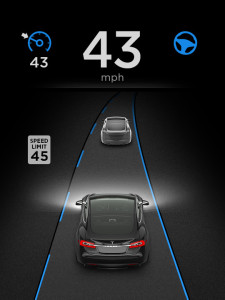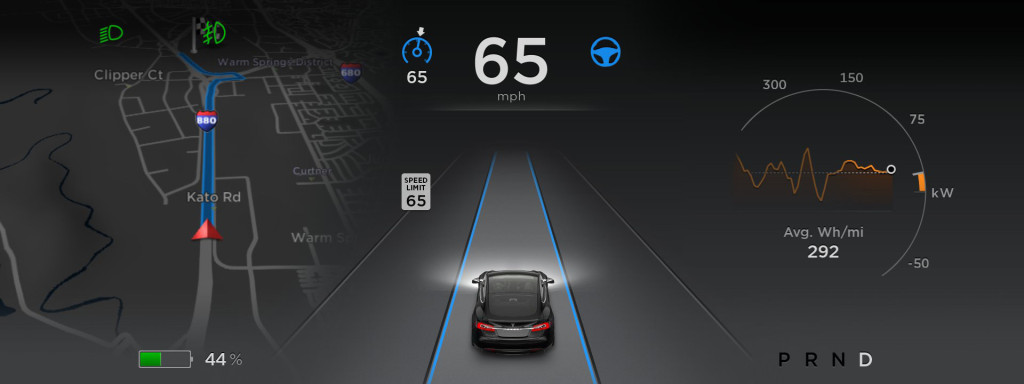
Electrek: Musk says 1st-gen Autopilot already has cut crashes by 50%
By onMarket Trends | Repair Operations | Technology
Tesla CEO Elon Musk last week said Tesla’s Autopilot has already proven itself “almost twice as good as a person” in avoiding crashes, according to Electrek.
“The probability of having an accident is 50% lower if you have Autopilot on. Even with our first version.” Musk said during a meeting with Norwegian Minister of Transport and Communications Ketil Solvik-Olsen, according to a Sunday report on the news site. “So we can see basically what’s the average number of kilometers to an accident – accident defined by airbag deployment. Even with this early version, it’s almost twice as good as a person.”
Tesla earlier this month tweeted that Autopilot, which offers limited self-driving capabilities (the driver still must pay attention), has helped or chauffeured drivers over 47 million miles.
Over 47M miles driven on Autopilot, the more you drive, the more we’ll learnhttps://t.co/REuR12rMHH
— Tesla Motors (@TeslaMotors) April 9, 2016
Musk said such data — though “billions of kilometers” were required — would help convince the world to embrace self-driving cars, according to Electrek. (The site offers a disclaimer that some writers have stock in Tesla or other electric cars.)
“I think it’s going to be important in term of satisfying regulators and the public to show statistically with a large amount of data – with billions of kilometers of driving – to say that the safety level is definitively better, by a meaningful margin, if it’s autonomous versus non-autonomous,” Musk said, according to Electrek.
Interestingly, Google’s self-driving car project only reports 1.5 million miles to date.
Drivers of light- to heavy-duty vehicles put an estimated 3.15 trillion miles on U.S. roads last year, according to the Federal Highway Administration.

Telsa’s Autopilot is demonstrated in this screenshot. (Provided by Tesla.)
Humorously, given the media attention (guilty!) to the Autopilot comments, Electrek also reported Thursday this Musk observation:
“I have to be careful with what I say these days. … I’ll make an off-hand comment with a group like this and then it will be a small thing in a page 3 article in Norwegian newspaper and then international press will seize on that and turn into a big headline.”
Musk’s airbag criteria is interesting, though, considering that Autopilot is designed to work at high and lower speeds. Lower-speed collisions — not necessarily guaranteed to blow an airbag — are more common. On the other hand, airbag-blowing crashes are more likely to hurt Tesla occupants, and preventing human injuries (and deaths) will obviously be the top concern of regulators.
Regardless of such definitions, a first-generation system with that level of success probably isn’t great news for shop volume — particularly as Autopilot will be an option for the mass-market Model 3.
However, there’ll still be plenty of near-term work when dumber cars (or even Autopilotless Teslas) bang into these vehicles, not to mention plenty of parts and calibration revenue from all the sensory-organ gadgets needed for Autopilot. From Tesla:
“In October of last year we started equipping Model S with hardware to allow for the incremental introduction of self-driving technology: a forward radar, a forward-looking camera, 12 long-range ultrasonic sensors positioned to sense 16 feet around the car in every direction at all speeds, and a high-precision digitally-controlled electric assist braking system. Today’s Tesla Version 7.0 software release allows those tools to deliver a range of new active safety and convenience features, designed to work in conjunction with the automated driving capabilities already offered in Model S. This combined suite of features represents the only fully integrated autopilot system involving four different feedback modules: camera, radar, ultrasonics, and GPS.” (Emphasis added.)
More information:
“Tesla’s Autopilot lowers probability of having an accident by 50% based on early data, says Musk”
Electrek, April 24, 2016
Telsa blog, Oct. 14, 2015
Featured images: Telsa’s Autopilot is demonstrated in this screenshot. (Provided by Tesla.)
